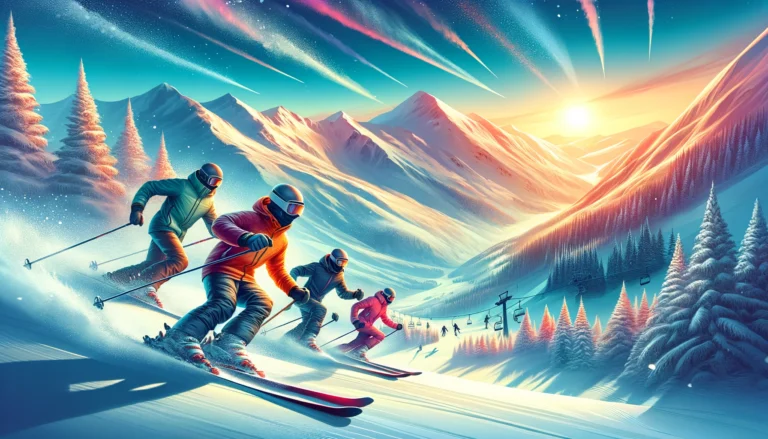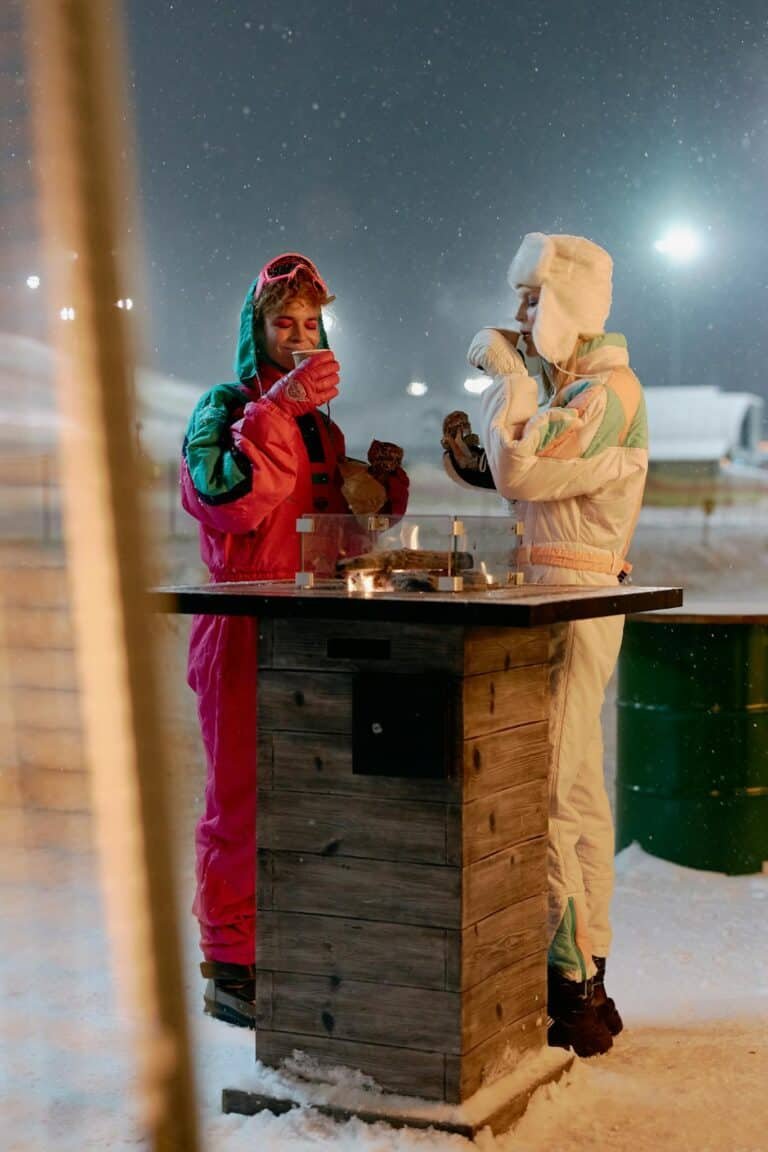Powder Skiing: Great Tips for Embracing the Rush
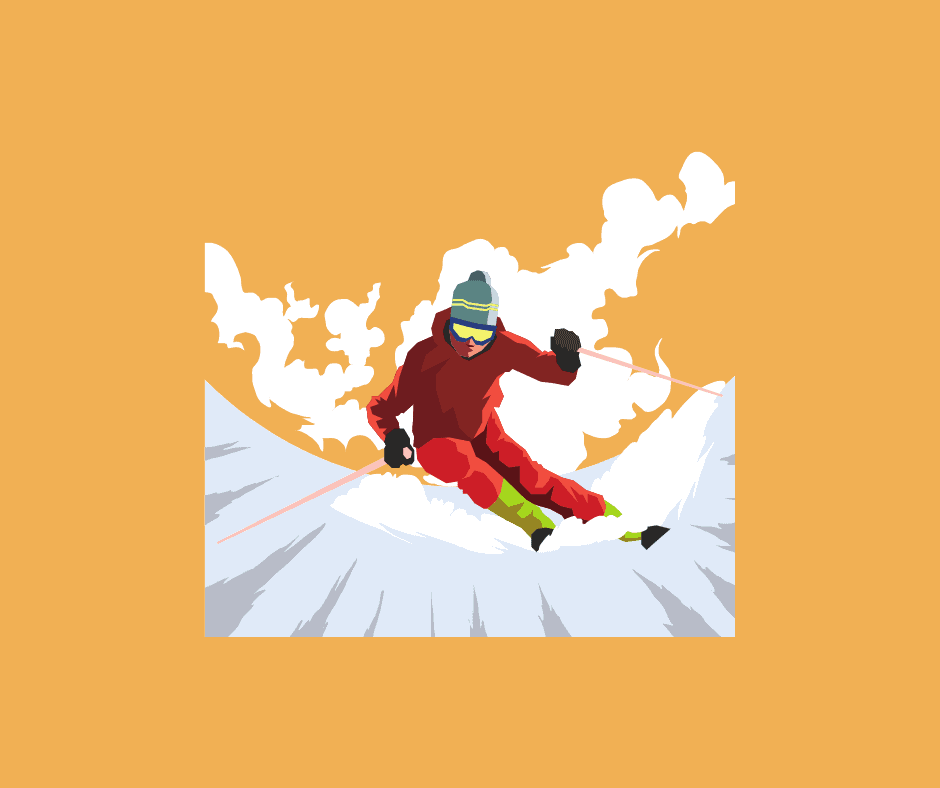
Powder skiing is an exhilarating pursuit that can take your winter sports experience to a whole new level. It is a unique experience that allows skiers to truly embrace the magic of winter as they ski powder through the untouched slopes, leaving behind a trail of excitement and awe. For those who seek the ultimate thrill, there’s nothing quite like the feeling of weightlessness as you effortlessly ski powder, floating on a cloud of snow with each turn.
However, conquering the deep snow requires more than just basic skiing skills. It’s about understanding the science behind it and mastering specific techniques.
The joy of gliding through fresh powder is incomparable, often described as ‘surfing on clouds’ by those who’ve tasted this unique thrill.
But without proper knowledge and preparation, you might find powder skiing challenging instead of enjoyable. Check out the latest skis on the market that are designed to help you make the most of your next powder-filled adventure.
So let’s delve into what makes it special and how you can prepare for your first run down a powdery slope.
Key Takeaway
- Proper Equipment: Using wider skis designed for powder conditions.
- Technique Adjustments: Adapting skiing style to deep snow, such as leaning back slightly to keep the ski tips up.
- Awareness of Snow Conditions: Understanding different types of powder snow and how they affect skiing.
- Safety Precautions: Being aware of avalanche risks and carrying appropriate safety gear.
- Physical Conditioning: Being in good shape to handle the demands of powder skiing, which can be more physically taxing than groomed slope skiing.
The Thrill of Powder Skiing

Envision yourself atop a virgin slope, an expanse of fresh powder snow glistening in the sunlight stretching out before you. This is where we plunge into the world of powder skiing – a unique experience that attracts winter athletes globally.
This type of downhill sport presents its own set of challenges and rewards unlike traditional piste or groomed trail skiing. On groomed trails, your edges dig into hard-packed artificial snow, providing grip and control during turns. But when it comes to skiing powder, there’s no firm base underneath; instead, your skis sink into soft fluffy layers, which can be both exhilarating and intimidating at first.
Finding Your Balance in Deep Powder
Maintaining balance while navigating deep powder requires different techniques than those used on compact surfaces like artificial snow or ice-covered runs.
Determining The Type Of Snow
A crucial aspect before making any turn involves understanding what type lies beneath those beautiful white blankets covering mountainsides everywhere around us every winter season.
- Bouncing lightly a couple of times prior to initiating any movement allows oneself to feel how dense a particular patch might be, thereby adjusting accordingly depending on whether it’s light, fluffy powdery stuff versus a denser packed version sometimes found at lower elevations after a few days without new precipitation falling from overhead skies.
- Snowmass’s Kevin Jordan suggests bouncing lightly a couple of times prior to initiating any movement, allowing oneself to feel how dense a particular patch might be, thereby adjusting accordingly depending on whether it’s light, fluffy powdery stuff versus a denser packed version sometimes found at lower elevations after a few days without new precipitation falling from overhead skies.
Powder Skiing Expert Tips

The sensation of gliding through fresh powder snow is unparalleled, but it does require a unique set of skills and techniques.
Here are some expert tips to help you navigate the snowy terrain like a pro, inspired by professional ski instructors such as Snowmass’s Kevin Jordan.
Finding Your Balance in Deep Powder
The first step towards mastering powder skiing lies in finding the balance. Unlike traditional downhill skiing where leaning back can be beneficial, deep powder surfing demands staying centered over your foot for optimal control and speed maintenance.
This position allows skiers to float effortlessly on top of the powdery surface without sinking too deeply into it. It also aids in smoother turns while navigating deeper patches or steeper runs with ease.
Determining the Type of Snow
Snow conditions vary significantly depending upon weather patterns and geographical location among other factors which directly impact how one approaches their run-down slopes covered with fresh snowfall.
To gauge what kind you’re dealing with before embarking on your journey downward; try bouncing gently a couple of times prior to making any turn – this will give you valuable insight into its density and resistance level against movements made during rides down hillsides blanketed under soft fluffy layers versus those more densely packed wetter types requiring extra effort from winter athletes for maneuverability purposes.
Remember practice makes perfect. Spending time honing these techniques across diverse terrains not only enhances technical abilities but develops intuitive understanding crucial when handling various situations encountered during thrilling ventures onto untouched snowy landscapes beckoning adventurous souls seeking joyous thrill associated with this form sport loved worldwide by many enthusiasts alike.
Natural vs Artificial Snow – What Makes Powder Skiing Special?
There’s a unique thrill that comes with powder skiing, and the type of snow you’re navigating plays an integral role in this exhilarating experience. Let’s delve into how natural and artificial snow impacts your adventure on the slopes.
Natural snow originates high above us within clouds as water vapor freezes directly into intricate ice crystals. As these delicate structures descend to earth, they stack loosely upon one another creating fluffy layers filled with air pockets – perfect for powder skiing.
The Science Behind Natural Snow
Skiing on naturally occurring powdery surfaces offers winter athletes a nearly weightless sensation due to its loose structure allowing skis to float atop without much resistance or friction. This ‘floating’ feeling is what makes every turn feel like surfing through white waves of softness.
Artificial snow, however, tells quite a different story when it comes underfoot while carving down ski resorts’ groomed runs.
A Closer Look at Artificial Snow
Frequently used by ski resorts during less than optimal weather conditions for natural accumulation, artificial snow production involves spraying water droplets up against freezing temperatures so they crystallize before hitting ground level.
This process results in harder granules compared to their softer counterparts found in nature since there’s insufficient time for complex crystal formation during rapid freezing. Consequently, such man-made flakes tend towards compact underneath skis rather than offering lift-off akin to fresh powder does. Here, you can learn more about this fascinating process from experts themselves.
Differentiating Your Ski Experience: Nature vs Machine Made Flakes
In comparison between untouched terrain versus artificially made slopes; the former promises unpredictable challenges but softer landings whereas the latter provides consistent yet firm conditions making each run uniquely thrilling irrespective of where resort powder lies.
Types of Powder Skiing – Resort Powder vs Bottomless Powder
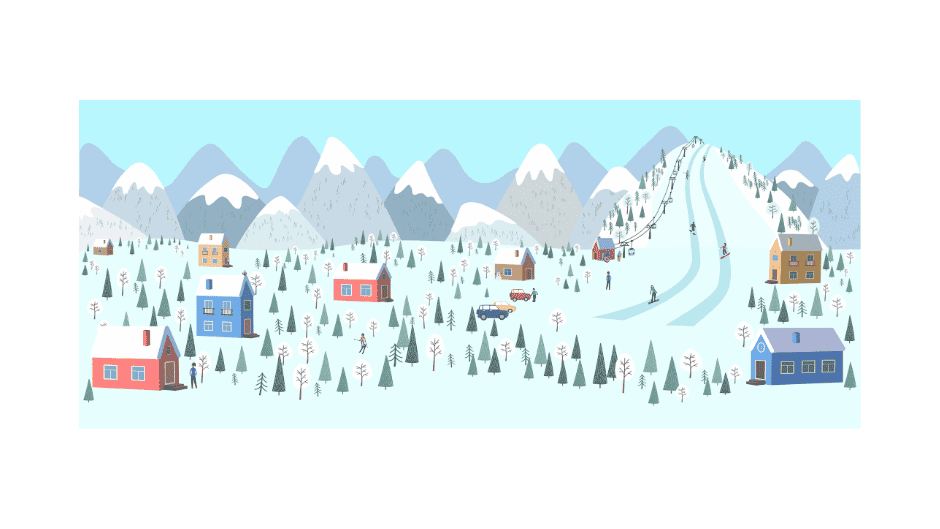
Resort Powder
Freshly fallen or recently dusted, resort powders are typically found within ski resorts. They might not offer the depth characteristic of their counterpart, but they promise an exciting ride for winter athletes nonetheless.
A major advantage of resort powders lies in their accessibility. These are common features at popular destinations like Sun Valley Ski Resort, making them a fantastic choice for beginners who wish to experience fresh snow without straying too far from groomed trails.
Bottomless Powder
In stark contrast stands bottomless powder – deep layers of untouched natural snow offering an immersive challenge even to seasoned skiers seeking extreme thrills beyond traditional slopes.
Skiing on such terrains requires advanced skills due to their unpredictable nature compared with regular runs usually encountered in resorts. Despite these challenges, experienced enthusiasts continue pursuing this relentless adventure because nothing quite compares to sinking knee-deep into fluffy mounds while navigating each turn.
The key difference between these two forms primarily boils down to how they respond when pressured by your skis; whereas resort powders compact underneath providing stable footing relatively easily, bottom-less ones may cause you to sink deeper into the surface owing to looser consistency which only adds more excitement as every turn becomes thrilling unpredictability.
Decoding the Art of Selecting Skis for Powder Skiing
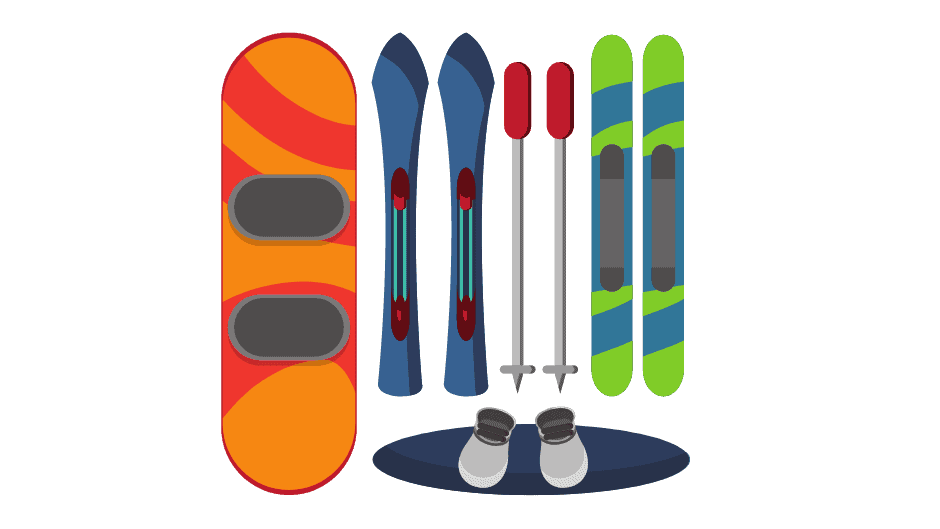
Among these, your choice of skis plays a crucial role in enhancing or dampening this adventure. The lightweight and nimble design of a powder skis makes it the perfect choice for skiers looking to carve through deep snow and tackle challenging terrain with ease.
The unique design and build of powder skis set them apart from their regular counterparts. The width is one key aspect – wider skis have more surface area which aids flotation on fresh snow rather than sinking into it, making them ideal for deep powder surfing.
Finding Your Ideal Pair: Factors to Consider
Selecting the right pair involves consideration beyond just length and width; factors such as sidecut radius (the shape), flex pattern (how much resistance there is when you bend it), and rocker/camber profile also play significant roles in determining how well you’ll navigate through snowy landscapes.
Your personal attributes including height, weight along skill level should guide your selection process too. For instance, lighter individuals might prefer softer-flexing models whereas heavier riders may find stiffer options provide better control.
Ski Recommendations Tailored for Powder Snow Conditions
- Rossignol Soul 7 HD: This model stands out due to its innovative Air Tip technology which enhances floatation by reducing swing weight at each end – great if versatility across different terrains including soft snow appeals to you.
- Nordica Enforcer 110 Free: If speed thrills you then consider this powerful performer equipped with carbon-reinforced construction providing exceptional stability without sacrificing agility.
- Kastle BMX105 HP: Known particularly for its unique Hollowtech tip that reduces vibrations ensuring smooth rides whether charging down steep faces or navigating tight tree runs.
Unforgettable Destinations for Powder Skiing
The thrill of powder skiing takes winter athletes to diverse locations worldwide. Certain destinations have gained popularity due to their consistent snowfall and prime ski conditions.
Utah – The Greatest Snow on Earth
In the realm of North American powder skiing, Utah stands out as “The Greatest Snow on Earth”. This isn’t just an advertising ploy – it’s supported by scientific evidence. Thanks to its unique geographical location, Utah sees an average annual snowfall of 500 inches which makes it perfect for powder skiers.
A number of esteemed ski resorts in the state like Alta and Deer Valley Resorts are renowned among winter sports enthusiasts globally. They offer some excellent terrains that make them ideal spots for those seeking fresh resort powder lies or deep bottomless powdery slopes.
Beyond exceptional slopes, these places also provide professional ski instructors who can guide beginners through their first experience with deep powder surfing making Utah a destination suitable not just for seasoned pros but even novices eager to try this exhilarating sport.
Gulmarg – India’s Hidden Gem
Moving eastwards from North America brings us to Gulmarg in India’s hidden gem nestled within the Himalayas known for its impressive amount of natural snow each year rivaling top-notch destinations such as Alta when considering annual snowfalls.
During peak season (January-February), overnight falls transform landscapes into what seems like endless white sea-perfect terrain where your skis leave fresh tracks every run down.
This region is home to one of Asia’s highest gondolas taking riders up 4k meters above sea level and offering breathtaking views over Pir Panjal Range before descending back down untouched slopes covered in light fluffy Gulmarg’s infamous powdery blanket. Beyond amazing skiing opportunities alone there are numerous other outdoor activities available including trekking across frozen lakes under starlit skies or exploring ancient temples scattered around nearby villages adding more reasons why a trip here becomes a truly unforgettable adventure beyond just amazing skiing experiences.
The Art & Science Behind Deep Powder Surfing
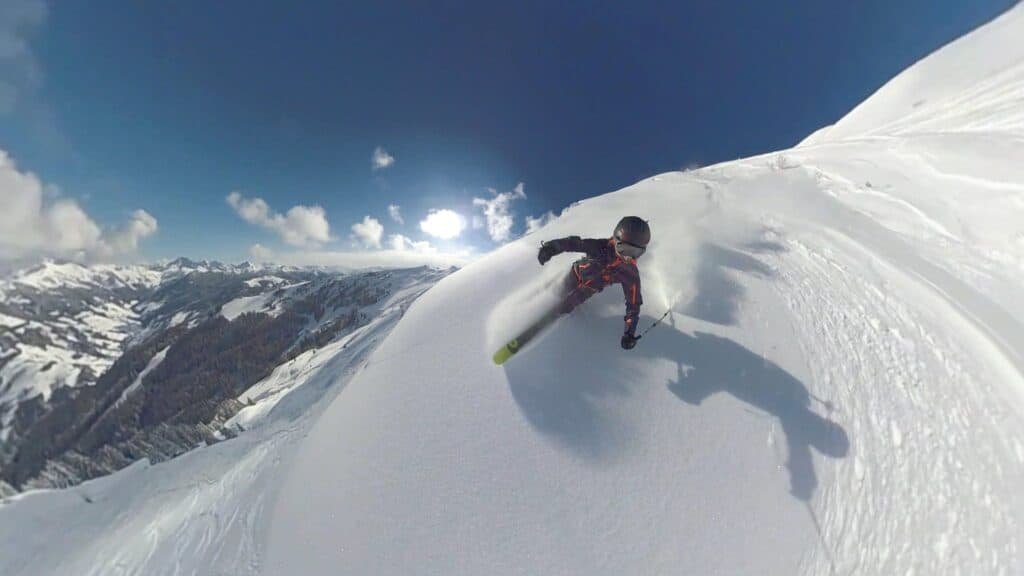
Deep powder surfing, or as it’s more commonly known powder skiing, is a captivating winter sport that blends art and science. It requires skiers to master the delicate balance of gliding over fresh snow while maintaining control.
Navigating Speed in Uncharted Snow Territory
In deep powder terrain where resistance increases due to layers of fluffy white goodness beneath your ski tips, managing your speed becomes crucial. Maintaining momentum helps keep you on top of the surface rather than sinking into it – this calls for larger turns when carving through untouched natural crystals.
A Balancing Act: The Role Body Position Plays
Your stance significantly influences how well you navigate through these challenging terrains. Leaning forward can cause your ski tips to dive under the snow resulting in unwanted face shots. To avoid such mishaps adopt a centered stance with a slight backward lean allowing better floatation without compromising stability.
Finding Your Rhythm Through Bouncing Before Turning
This technique involves bouncing lightly before initiating each turn – akin to bobbing gently like a cork atop water waves. This rhythmic motion provides valuable feedback about underlying texture variations, helping make smoother transitions between successive curves. Remember practice makes perfect; don’t shy away from experimenting with different approaches until discovering what works best personally.
If done correctly, “bouncing” allows understanding of whether they encounter hard-packed base layers or softer patches filled with untouched natural crystals stacked loosely providing a unique sensation compared to compact underneath artificial counterparts common at many resorts. So embrace the challenge and relentless pursuit of fresh powdery slopes despite unfavorable weather sometimes truly appreciate the joyous thrill associated with this adventurous aspect making one feel weightless above the world below.
Preparing Yourself For Your First Powder Run

Powder skiing, a beloved pastime of many winter athletes, presents its own unique set of challenges. It’s an adventure that requires both physical and mental preparation to fully appreciate the joyous thrill associated with it.
Mental Readiness: Embracing Falls & Visualizing Success
In powder skiing, falls are inevitable but they’re also valuable learning experiences. Seasoned skiers often share how each tumble helped them understand their mistakes and improve upon them for future runs.
Visualization techniques used by professional ski instructors can be beneficial too – imagine yourself smoothly navigating down powdery slopes before actually doing so; this helps build confidence while reducing anxiety.
Physical Conditioning: Strength Training & Aerobic Activities
The unpredictable nature of deep snow demands more from your body than regular piste skiing does. Focusing on core stability and leg strength through targeted exercises will enhance your ability to maintain balance during turns in deep snow.
Furthermore, sustained effort over longer periods required for powder runs makes aerobic conditioning essential as well – activities such as cycling or running could help boost cardiovascular fitness effectively.
Skill Development: Face Shots & Steeper Runs
Face shots refer to moments when loose snow sprays up into skiers’ faces during rapid descents – providing an adrenaline rush unique to powder skiing.
Steeper runs pose their own set of challenges requiring careful navigation while maintaining control.
These skills might seem intimidating initially but under proper guidance from experienced professionals, they become manageable milestones on your journey towards becoming a proficient skier.
Remember that patience is key here; developing new skills takes time, so don’t get discouraged if progress seems slow initially.
With adequate physical conditioning along with focused skill development efforts, stepping onto those fresh powdery slopes becomes less daunting indeed.
Understanding How Natural Snow Compresses Underneath Skis
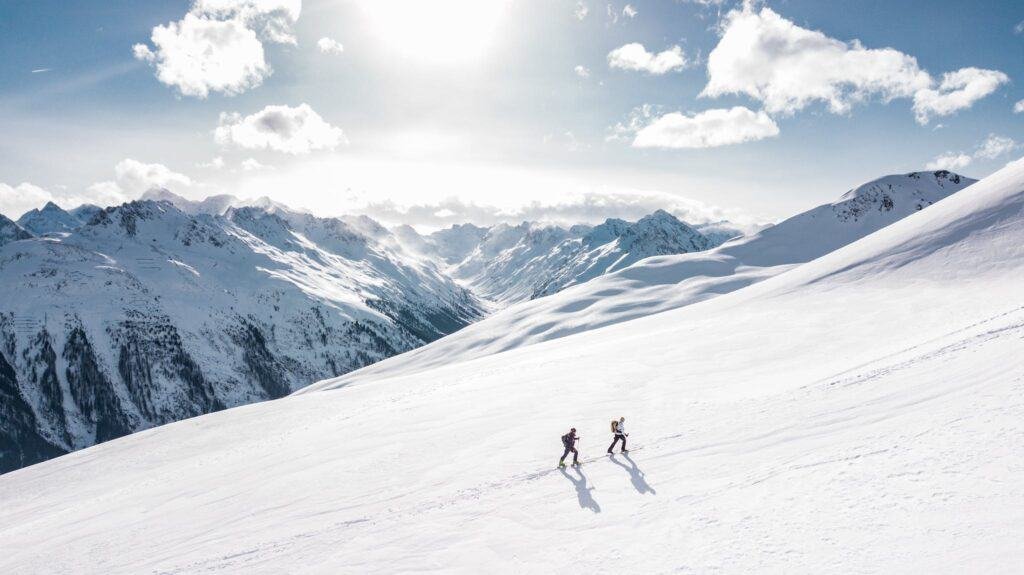
Natural snow and artificial or compacted snow offer unique skiing experiences. The distinction is primarily due to the way natural snow compresses under skis during downhill runs.
Skiing on natural, fluffy layers of loosely stacked crystals with high air content feels like gliding over a cushion when compressed by a skier’s weight. This pressure leaves behind temporary trails after each turn that quickly disappear as fresh flakes fill up your previous line, in contrast to hard-packed or groomed ski resorts where tracks remain for longer periods.
This “floating” sensation while skiing powder, devoid of bumps and divots felt on regular slopes, makes it an exhilarating experience sought-after by winter athletes worldwide.
The Impact Of Speed On Compression
Maintaining speed plays a critical role in powder skiing since it directly influences how much the underlying layer of snow will compress. A slower pace might cause you to sink deeper into untouched terrain than desired; hence maintaining momentum helps keep you atop those dreamy white waves rather than getting bogged down within them.
Your velocity also affects how rapidly new tracks form and disappear behind you – faster speeds mean quicker compression but also more rapid refilling by falling flakes, making every run unique.
Influence Of Ski Design In Managing Snow Compression
Beyond technique and speed control, equipment design has a significant influence on managing this interaction between gear and ground conditions too. Wider powder-specific skis, designed specifically for deep-snow environments, offer increased surface area which reduces sinking depth, thereby facilitating better flotation over soft surfaces compared with traditional narrow designs used predominantly for piste-oriented activities.
A comprehensive understanding of these subtle yet vital dynamics can greatly enhance one’s appreciation towards this sport, besides helping improve performance levels substantially over time.
The Ecstasy Of Face Shots While Skiing In Fresh Powder
When it comes to powder skiing, the joy of face shots is an experience that every winter athlete seeks. The term “face shot” refers to those moments when you’re carving through fresh powder and a spray of snow hits your face.
This sensation is not just about feeling the cold touch of natural snow on your skin; it’s also about experiencing nature in its rawest form while descending down powdery slopes at speed. Let’s delve into how this exhilarating moment can be achieved and why skiers find it so thrilling.
Achieving Perfect Face Shots
To create that cloud-like burst around you during descent requires maintaining enough momentum as well as correct body positioning. It isn’t simply going fast but keeping a consistent pace which helps stir up the deep powder surrounding you.
Your stance plays a pivotal role here too – leaning forward slightly directs more loose snow toward your face, resulting in bigger sprays or what we call ‘face shots’. But remember: balance is key. Lean too much forward and risk toppling over.
The Joyous Thrill Associated With Face Shots
Many seasoned skiers often describe their first proper face shot as akin to flying – weightless with pure adrenaline pumping through their veins. This connection between man and environment encapsulates what makes powder skiing special for many outdoor enthusiasts- raw yet liberating simultaneously.
In fact, some even say they feel like time slows down during these snowy bursts allowing them to savor each second amidst nature’s beauty fully. Truly captivating indeed.
Tips To Enjoy Safe And Fun-Filled Face Shots
Several strategies ensure safe yet enjoyable runs filled with glorious snowy blasts.
- Finding goggles that fit snugly without fogging up becomes essential since visibility can be significantly reduced due to heavy sprays from successful face shots.
- You might want to consider wearing waterproof gear including neck gaiters or balaclavas which protect against cold wetness associated with these moments.
- Maintaining physical fitness will help endure longer ski sessions thereby increasing chances for more frequent perfect shots.
All said done, nothing beats personal experiences shared by fellow skiers who’ve mastered art achieving spectacular faceshots despite sometimes unfavorable weather conditions making one truly appreciate joyous thrill associated with chasing fresh powdery slopes.
The Challenge And Reward Of Chasing Fresh Powdery Slopes
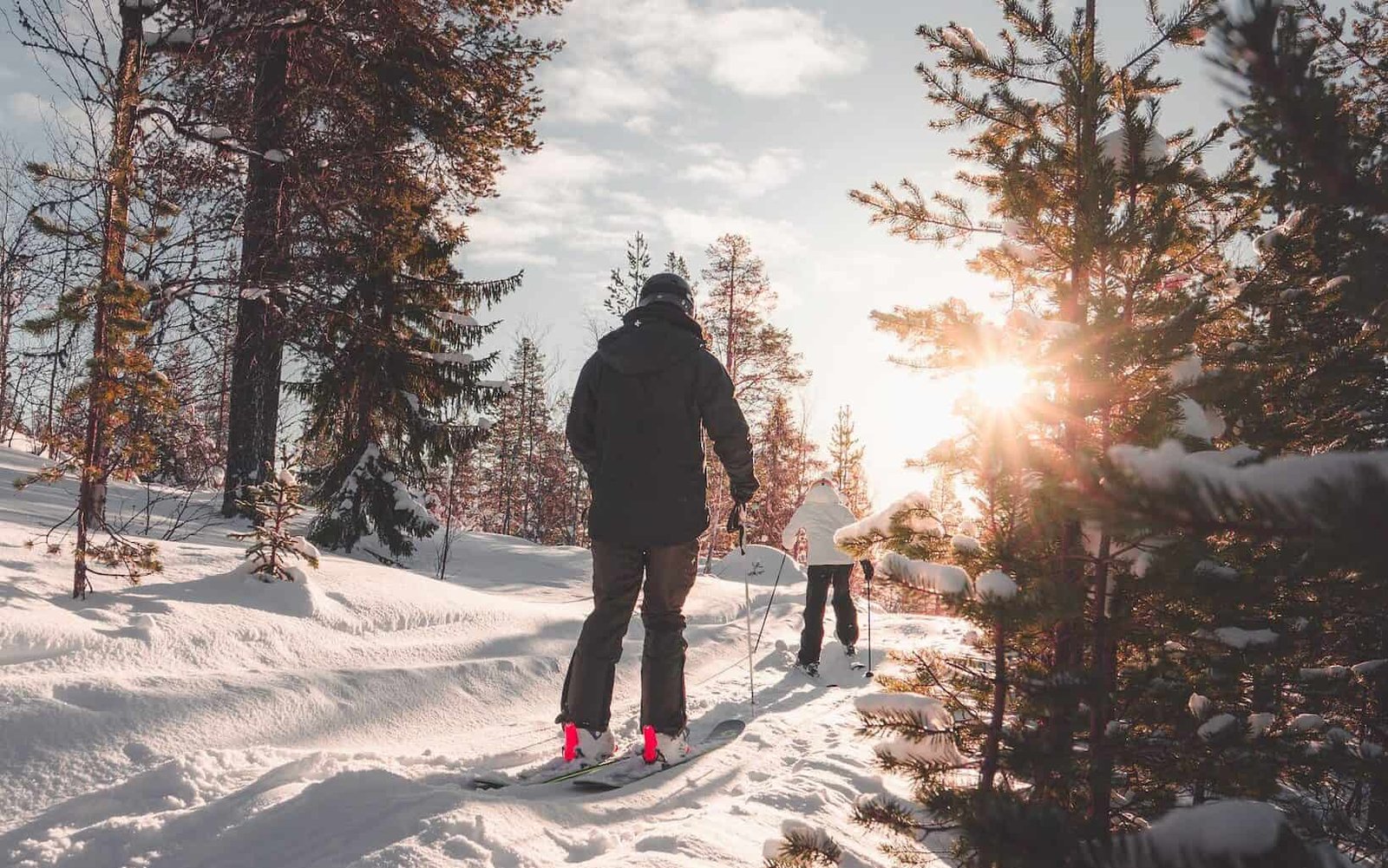
But this exhilarating experience often involves overcoming several challenges – from unpredictable weather conditions to early morning starts and sometimes even hiking into remote areas.
Navigating Unpredictable Weather Conditions for the Perfect Run
Powder days can be elusive due to changing weather patterns. Skiers need to stay alert about forecasts and be ready at short notice when the perfect storm hits.
This not only demands physical readiness but also mental preparation as one must have resilience against potential disappointments such as sudden changes in forecast or late arrivals after all fresh tracks are claimed by others.
Rising Early: The Secret To Getting First Tracks On Fresh Snow
In popular ski resorts where winter athletes abound, getting first dibs on fresh powdery slopes means waking up before dawn. This commitment may seem extreme but those who’ve experienced making first tracks on pristine terrain know it’s worth every minute sacrificed from sleep.
Besides beating crowds onto lifts, early risers also enjoy serene morning views over mountains blanketed under new-fallen snow – another perk adding charm to this adventurous pursuit.
Hiking Into Remote Areas For Untouched Snow
Finding untouched powder often leads skiers off groomed runs into backcountry areas which require extra effort and safety precautions.
Backcountry skiing provides access to secluded spots preserving deep layers of undisturbed natural snow crystals stacked long after the last storm passed through mainstream ski routes within resort boundaries. Backcountry Safety Guidelines provide necessary information regarding safe practices while exploring these territories.
Mental & Physical Preparation Is Key In Pursuit Of Powder Runs.
- Stay physically fit during the offseason so you’re always ready for unexpected storms bringing heavy dumps suitable for memorable powder runs. A regular workout routine involving cardio exercises like running or cycling helps maintain the stamina required for rigorous downhill rides amidst deep snowy terrains.
- Avoid disappointment by setting realistic expectations. Think long-term and set small goals that are within your control. Don’t beat yourself up if you don’t get the outcome you wanted – focus on what you can learn from it and how to apply it going forward. Above all, give yourself grace in the process – it’s not always easy! 🙂
FAQs in Relation to Powder Skiing
What’s so special about powdered snow for skiers?
Powdered snow offers a unique, smooth and weightless skiing experience that is often described as “surfing” or “floating”. It’s the dream condition for many winter athletes.
Is it more difficult to ski in powder?
Skiing in powder can be challenging due to its deep and loose nature. However, with proper technique and equipment, it becomes an exhilarating adventure.
What is powder in skiing?
In skiing terms, ‘powder’ refers to fresh, untouched snow that hasn’t been compacted by other skiers. It provides a soft cushiony surface ideal for adventurous runs.
Why do people love powder?
The thrill of gliding over fresh powdery slopes gives a sense of freedom unmatched by groomed trails. The challenge combined with the sensation of floating makes it irresistible to most skiers.
Conclusion
It’s an addictive blend of adrenaline and tranquility. Mastering it requires balance, understanding the snow type, and choosing the right skis. Natural snow enhances this experience, providing a weightless sensation that artificial snow can’t replicate.
Whether you’re gliding on resort powder or diving into bottomless powder, each offers its unique charm. Selecting destinations like Utah or Gulmarg could lead to unforgettable deep-powder surfing experiences.
Your first run down fresh powdery slopes will be memorable with physical and mental preparation. The ecstasy of face shots awaits!
Powder skiing isn’t just about chasing fresh powdery slopes; it’s also about appreciating the challenge they present and relishing in their reward.



